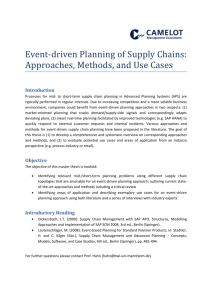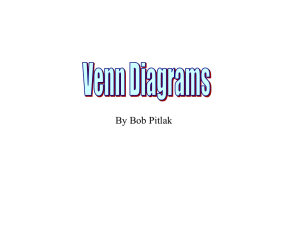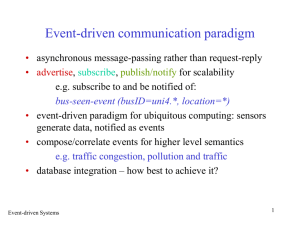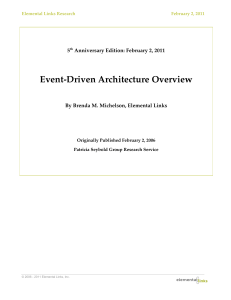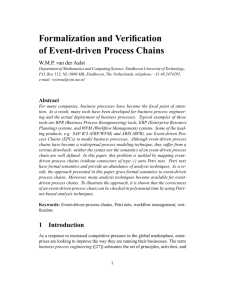Program - Computer Science and Software Engineering
advertisement
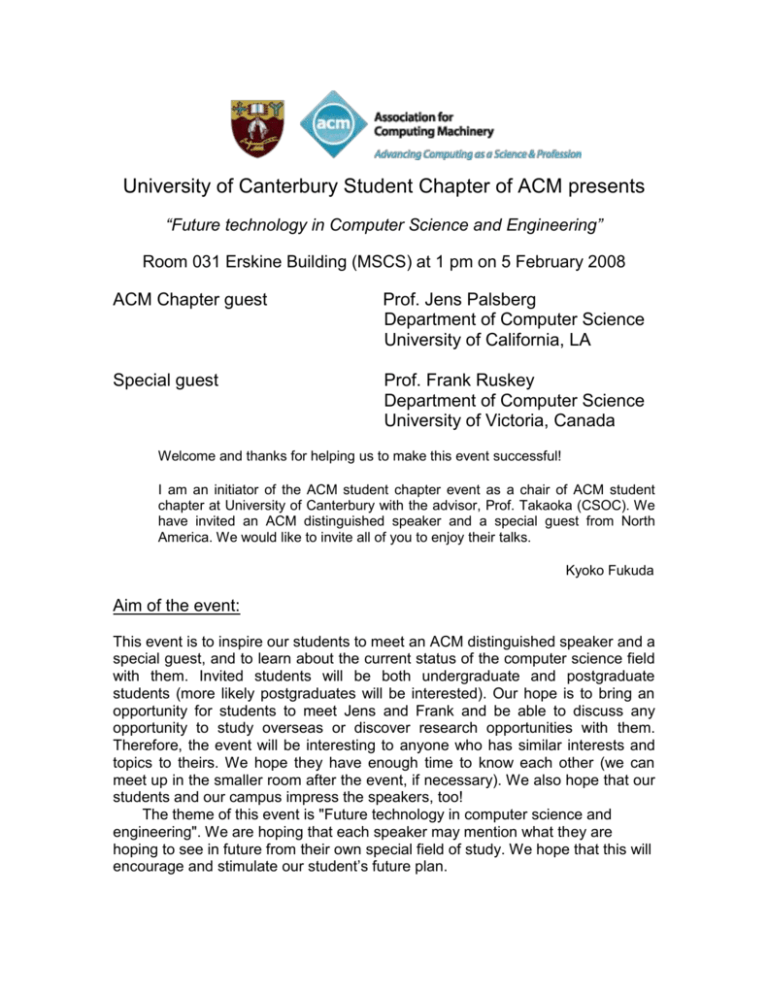
University of Canterbury Student Chapter of ACM presents “Future technology in Computer Science and Engineering” Room 031 Erskine Building (MSCS) at 1 pm on 5 February 2008 ACM Chapter guest Prof. Jens Palsberg Department of Computer Science University of California, LA Special guest Prof. Frank Ruskey Department of Computer Science University of Victoria, Canada Welcome and thanks for helping us to make this event successful! I am an initiator of the ACM student chapter event as a chair of ACM student chapter at University of Canterbury with the advisor, Prof. Takaoka (CSOC). We have invited an ACM distinguished speaker and a special guest from North America. We would like to invite all of you to enjoy their talks. Kyoko Fukuda Aim of the event: This event is to inspire our students to meet an ACM distinguished speaker and a special guest, and to learn about the current status of the computer science field with them. Invited students will be both undergraduate and postgraduate students (more likely postgraduates will be interested). Our hope is to bring an opportunity for students to meet Jens and Frank and be able to discuss any opportunity to study overseas or discover research opportunities with them. Therefore, the event will be interesting to anyone who has similar interests and topics to theirs. We hope they have enough time to know each other (we can meet up in the smaller room after the event, if necessary). We also hope that our students and our campus impress the speakers, too! The theme of this event is "Future technology in computer science and engineering". We are hoping that each speaker may mention what they are hoping to see in future from their own special field of study. We hope that this will encourage and stimulate our student’s future plan. Possible program: February 5 1:00pm : Opening for five minutes, 1:05-2:20pm : Prof. Jens Palsberg “Event-Driven Software” 2:20-2:40am : Tea break 2:40-3:55pm : Prof. Frank Ruskey “Area Proportional and Minimum Area Venn/Euler diagrams” 3:55-4:00pm : Closing for five minutes. Each talk is for an hour followed by 15 minutes discussions. Abstracts: Talk 1 Title: Event Driven Software Speaker: Prof. Jens Palsberg Department of Computer Science University of California, Los Angeles Abstract: Event-driven programming has found pervasive acceptance, from highperformance servers to embedded systems, as an efficient method for interacting with a complex world. The fastest research Web servers are event-driven, as is the most common operating system for sensor nodes. An event-driven program handles concurrent logical tasks using a cooperative, application-level scheduler. The application developer separates each logical task into event handlers; the scheduler runs multiple handlers in an interleaved fashion. Unfortunately, the loose coupling of the event handlers obscures the program's control flow and makes dependencies hard to express and detect, leading to subtle bugs. As a result, event-driven programs can be difficult to understand, making them hard to debug, maintain, extend, and validate. This talk presents recent approaches to event-driven software quality based on static analysis and testing, along with some open problems. We will discuss progress on how to avoid buffer overflow in TCP servers, stack overflow and missed deadlines in microcontrollers, and rapid battery drain in sensor networks. Our work is part of the Event Driven Software Quality project at UCLA, which is aimed at building the next generation of language and tool support for event-driven programming. Brief Bio: Dr Jens Palsberg is a professor at the department of Computer Science, University of California, Los Angeles. His specialties include software engineering and compiler optimization. Talk 2 Title: Area Proportional and Minimum Area Venn/Euler diagrams Speaker: Prof. Frank Ruskey Department of Computer Science University of Victoria Canada Venn diagram is a collection of n simple closed curves with the property that each of the 2n possible intersections of the interiors and exteriors of the curves is non-empty and topologically connected. In an Euler diagram some of the intersections can be empty. We discuss two general problems: drawing Euler diagrams in such a way that each intersection has a specified area relative to the others (areaproportional Venn diagrams), and drawing Venn diagrams rectilinearly so that they have minimum area. The former problem has many applications and our results/software have been used by researchers in marketing, genomics, and medical statistics. The later problem has no “real-world application" currently, but has beautiful results of intrinsic scientific interest. Both areas have tantalizing open problems. This is joint research with my student Stirling Chow. Brief Bio: Dr. Frank Ruskey is a professor at the Department of Computer Science, University of Victoria, Canada He specializes in combinatorial generation, software testing and graph drawing.
